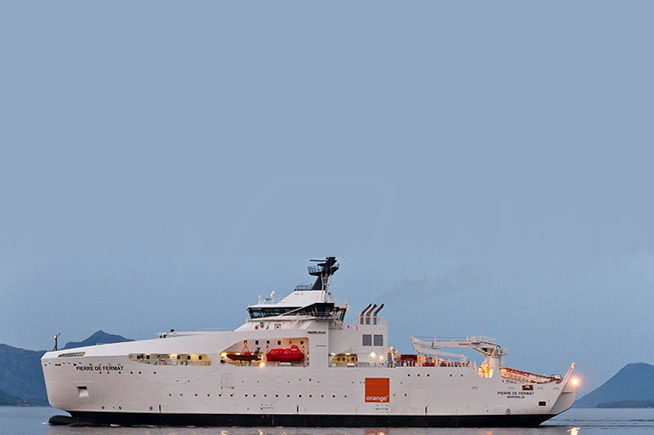Lately we’ve been hearing a lot about joint ventures to lay more and more submarine cables with the aim of bringing the Internet to the four corners of the globe
These are colossal undertakings, extremely demanding and very expensive, involving web and telecommunications companies. But there is a variable, perhaps, still little considered: the damage caused by sharks that seem to appreciate these fiber optic cables.
Google had already raised the problem of these “Internet-eating” sharks a few years ago, finding a solution to protect its submarine investments: using a material similar to Kevlar that, at equal weight, is five times more resistant than steel. Google, not owning the license of Kevlar, has patented another material – a polyethylene fiber – used to make bulletproof vests. Not all cables that run under seas and oceans, unfortunately, are protected with this special sheathing, and there are those who have invented the trade of “cable repairman.” Like Guillaume Le Saux who works for the French company Orange. Let’s see how he goes about his business.
The sharks really like bytes & bits
Many, often, forget that the Internet is something physical. Certainly not Guillaume Le Saux captain of the ship “the Pierre de Fermat”. This is a vessel, owned by telecommunications giant Orange, specially designed to lay and repair fiber optic cables that cross the seabed around the world. La vita di questo capitano è piuttosto intensa, vive in costante all’erta, pronto a essere inviato con il suo equipaggio in pieno oceano con un preavviso di massimo due ore.
Riparazioni sottomarine 24 ore su 24
Il capitano Le Saux e il suo equipaggio, quando arrivano sul luogo “incriminato”, calano il sottomarino Hector – un robot di sette tonnellate – in fondo al mare, a volte fino a una profondità di 5.000 metri. Il lavoro di Hector è quello di valutare il danno, seppellire il cavo appena posato sul fondo marino, oppure di portare le parti danneggiate a bordo della nave per ripararle e ripristinare il cavo per poi rimetterlo a posto.
 Fonte foto: Orange
Fonte foto: Orange
Una nave addetta alla riparazione dei cavi sottomarini
Un lavoro rischioso ma indispensabile
Il capitano Le Saux spiega che l’attacco dei cavi da parte degli squali è reale, anche se piuttosto raro. I pescecani, infatti, sono in grado di sentire l’odore della corrente elettrica, della radiazione elettromagnetica e, trattandosi di animali molto curiosi, cercando di mordere il cavo. Nella aree in cui l’acqua è più calda, cercano di prevenire il problema mascherando gli odori che li attirano così tanto avvolgendo i cavi con una guaina in alluminio. La tecnica viene conosciuta come cavo “pesce morto”, nel senso che gli squali non sono in grado di percepire le radiazioni quindi di non cercano il cavo.
(tratto da YouTube)
Gli squali non sono gli unici a danneggiare i cavi sottomarini?
Se fossero solo i pescecani a compromettere l’incolumità dei cavi, il lavoro del capitano Guillaume Le Saux sarebbe minimo. The damage, in 80% of cases, is the work of men’s activity, in most cases, unintentional. More often than not, it is a fishing vessel practicing trawling, which is not only damaging to the seabed, but often also to the cables. Sometimes it is the anchor that accidentally hooks an underwater cable, in other cases the anchor moves due to typhoons, storms and hurricanes and in moving, it takes a cable in full damage. Not to mention catastrophes such as tsunamis: it took months to repair the damage of this giant tidal wave that hit Asian countries in March 2011.
Some of the videos in this section have been taken from the Internet, then assessed in the public domain. If the subjects present in these videos or the authors had something against the publication, just make a request for removal by sending an email to: [email protected]. We will provide to the cancellation of the video in the shortest time possible.